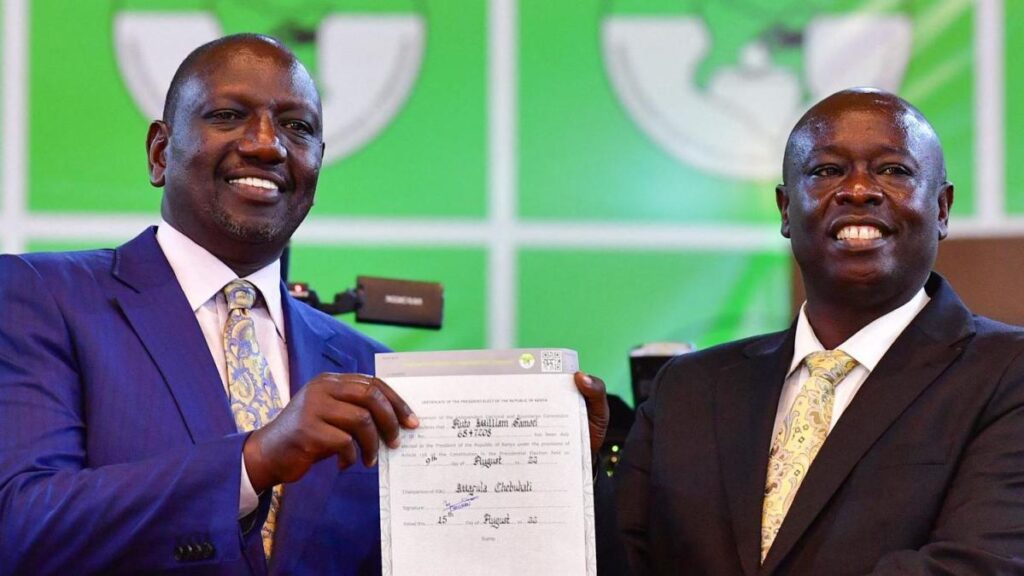The recent impeachment of Rigathi Gachagua as the Deputy President of Kenya marks a significant moment in the country’s political landscape, an event that many observers perceived as a failure of a leader who had just secured a joint ticket with Gachagua two years earlier. However, for President William Ruto, the swift removal of Gachagua, once seen as an ally, was a calculated move taken to avoid the dysfunction that can arise from a fractious relationship within the highest levels of government. Ruto’s own experiences with former President Uhuru Kenyatta—where a divide between the president and his deputy led to governmental strife—most likely influenced his determination to act decisively. Although the impeachment proceedings depicted an orderly and lawful process to outsiders, they stirred a complex emotional response among Kenyans, eliciting feelings of betrayal from Gachagua’s supporters, particularly in the Mount Kenya region. Interestingly, this sentiment quickly shifted to acceptance after Kithure Kindiki, Gachagua’s replacement, was appointed from the same region.
The Mount Kenya region is pivotal in Kenyan politics, often regarded as a critical driver of electoral outcomes due to its significant vote share. Historically, three of the five Kenyan presidents since independence have emerged from this region, which shapes political strategies across the nation. Gachagua’s ouster could have been politically perilous, given that Presidents typically tread carefully around the sentiments of the Mount Kenya electorate. In Gachagua’s attempt to consolidate power and influence in his home region, he became embroiled in controversies such as the promotion of ethnically divisive rhetoric—particularly his remarks about prioritizing certain areas based on previous electoral support. Such divisive politics put him at odds with Ruto’s agenda of national unity, prompting him to become a target for impeachment despite Ruto’s prior shared sentiments of regional allegiance.
Historically, political rifts between presidents and their deputies have demonstrated potential ramifications, as seen during Kenyatta’s term when Ruto himself was embroiled in conflict. This struggle established a narrative of persecution that resonated with voters, highlighting the difficulties of maintaining political alliances within the office of the presidency. Thus, Ruto’s choice of Gachagua as his running mate in the 2022 election seemed out of necessity rather than mutual trust. While Gachagua stood out among the candidates for deputy president, Ruto surprised many by making this selection rather than going for the more established Kidiki, who had previously served as deputy speaker and had garnered significant support in parliamentary circles.
Notably, Gachagua’s political fate was considerably swayed by Ruto’s alliance with former adversary Raila Odinga, whose active support in the impeachment demonstrated the dynamism of Kenya’s political alliances. The decision to appoint a close associate of Odinga, James Orengo, to lead the legal efforts during the impeachment proceedings illustrated the shifting sands of political partnerships in Kenya, raising questions about the durability of such alliances. President Ruto has also leaned on newfound camaraderie with Odinga, mending long-standing animosities while simultaneously integrating some members of Odinga’s party into the cabinet—a tactic hinting at a desire to stabilize his administration amidst the backdrop of an impending election cycle.
The ongoing narrative of political competition in Kenya underscores an environment where past grievances can morph into temporary alliances. Both Ruto and Odinga have navigated a convoluted web of loyalties over the years, changing allegiances depending on the political climate and their respective ambitions. In one election cycle they were rivals, and in another, they found common ground as allies—an indication that collaboration in Kenyan politics happens not only in response to shared ideologies but often as a strategy to ensure survival in the unforgiving political arena. The political landscape’s fluidity means that no faction can become overly confident, and leaders must remain ever-watchful regarding their regional bases while engaging in precarious partnerships.
Amid the tumult, Gachagua’s future now hangs in the balance. He is actively contesting his impeachment in court, which if successful, could offer him a reprieve and potentially a pathway back into political relevance. However, if unsuccessful, he risks facing a ten-year ban from running for office, marking a stark decline in what was once a promising political career. At 59, while Gachagua may have started late in the political game, history shows that Kenyan politicians often cultivate unpredictability, and therefore, one cannot completely rule out his potential comeback—either as a rival or potentially as an ally of Ruto in the future. Kenyan politics is characterized by relentless evolution, and amid apparent divisions, reconciliations or unexpected political maneuvers loom large on the horizon, reminding observers of the extraordinary resilience and adaptability inherent in the nation’s political systems.

